Making acorn squash puree is low maintenance and easy! With only 2 ingredients, roasting acorn squash and then pureeing is great to use in a variety of other recipes. It's the perfect puree for making muffins, baby food, pancakes, and so much more! You can even enjoy it on its own!
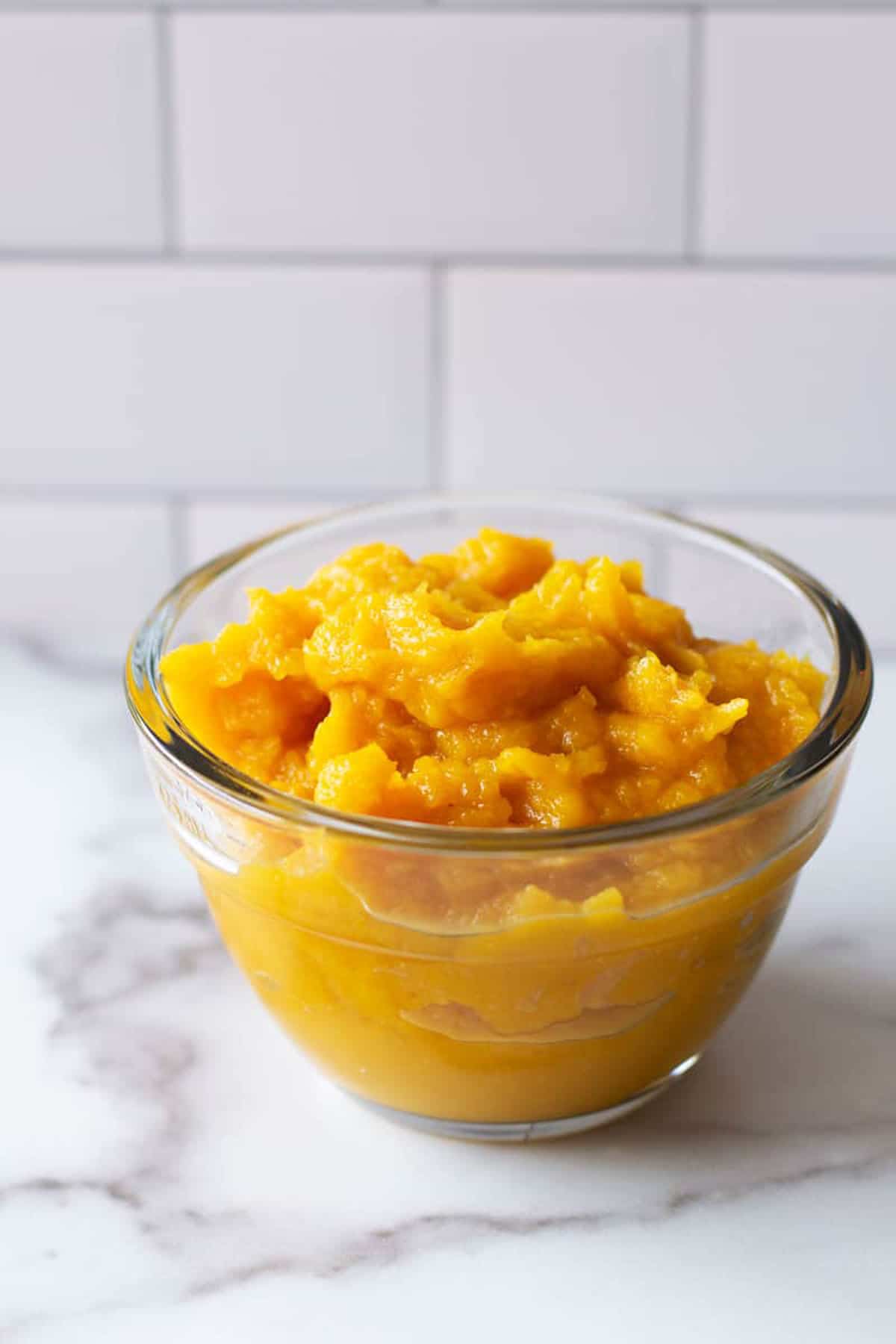
Jump to:
✔️ Quick Recipe Overview
Why This Is The The Best Squash Puree Recipe: Super easy to make, this acorn squash recipe is naturally sweet, creamy, and delicious. And, it's extremely versatile!
How Long It Takes: 50 minutes
Equipment You'll Need: knife, baking sheet, blender or food processor
Butternut squash and pumpkin puree can easily be found at just about any grocery store, but it's extremely rare to find acorn squash puree. And I have no idea why! It's smooth, velvety, and full of flavor. And it's extremely healthy. Since you can't typically buy it at the store like you can other types of purees, there is a huge benefit to learning how to make it at home. Not only is it healthier than store bought, it's really simple to make.
Acorn squash is one of those vegetables that doesn't get a lot of attention. Butternut and spaghetti squash are the popular ones, but acorn is my favorite winter vegetable. Vibrant, colorful, and full of nutrition, it can be prepared and used in many ways. When added to these acorn squash muffins, not only does it add a warm and delicious flavor, but the puree adds an incredible amount of moisture! A moisture level I typically don't find in muffins.
ℹ️ Why This Recipe Works
1. This puree is fantastic in so many different types of recipes such as pancakes, muffins, soups, sweet breads, and even ravioli!
2. Hands down, this is the best recipe for making acorn squash baby food. If you prefer to make your own baby food, this puree recipe is the one you should be making. It's only uses 2 ingredients and is incredibly nutritious.
3. When you roast it in the oven, it deepens the natural sweetness and locks in the natural moisture.
🛒 Ingredients You'll Need
To make this recipe, all you need is an acorn squash and olive oil. When olive oil is basted onto the flesh, it helps trap in the natural water content which produces a thicker puree. If you're making this for a baby and want to omit the olive oil, baste on a small amount of water to help maintain the moisture level.
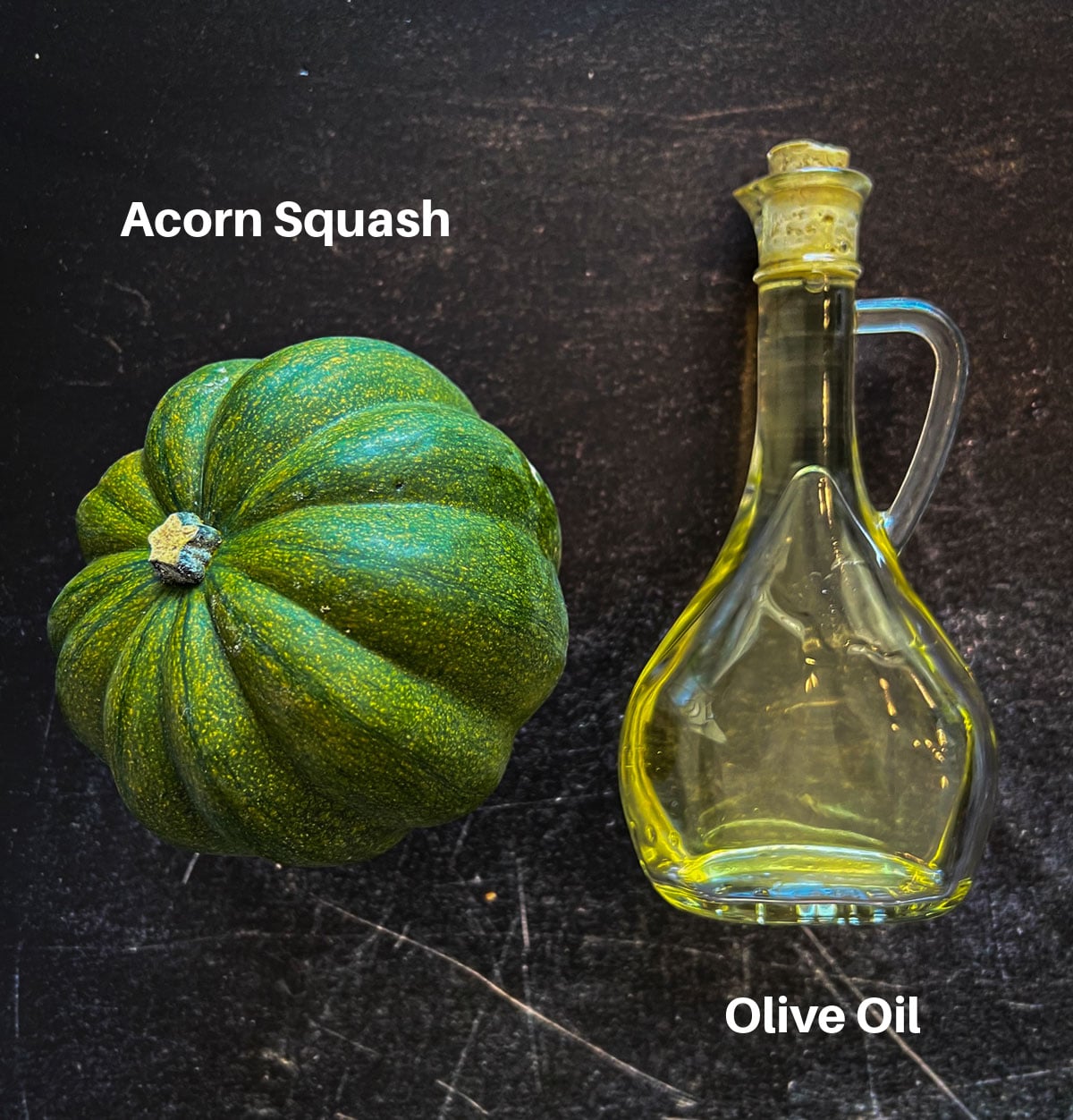
Types of Squash
The most common types of squash used for cooking include butternut, yellow, hubbard, spaghetti, zucchini, pumpkin, and acorn. (Yes, pumpkin is technically a squash.) While there are some similarities between these different types, they are all a bit quite different. Summer squash, like yellow and zucchini, tend to have a soft outer shell. Winter squash has a harder shell and can be found in the fall and winter months. For instance, hubbard is a winter squash and is great for making soups, like in this delicious blue hubbard squash soup.
Spaghetti squash is often used as a substitute for pasta. It has a mild flavor and is the perfect choice when making dishes like this spaghetti squash with goat cheese. After it has been roasted in the oven, it's easy to use a fork and shred. Add some marinara or pesto sauce and you've got a low carb meal that is perfect for any lunch or dinner!
While butternut squash is popular during the fall season, it's also used a lot in summer recipes like salads and these smoked chile rellenos. Butternut squash is a bit sweeter than the other varieties and has a slightly nutty taste. It works extremely well as the base of a soup, like in this spiced butternut squash soup. As for yellow squash, it's great when pan fried and is a great addition to these oven roasted peppers and mushrooms.
Acorn squash is considered both a summer and winter squash and is extremely healthy. It's high in fiber and does a great job absorbing nutrients from foods it's paired or mixed with. Mostly commonly, it's roasted, steamed, and baked. It tends to be a bit more stringy and fibrous than other types. It's also great for stuffing. The calories are slightly higher than other types. For example, one cup of baked, cubed butternut squash contains 82 calories, where acorn contains 115 calories for one cup.
👩🍳 Roasting Works Best
For best results, roast acorn squash in the oven when making puree. I've tried steaming, boiling, and microwaving it and roasting provides the richest and most savory flavor. When it's roasted, the texture becomes velvety smooth and the orange color is bright, rich, and vibrant. It's full of robust flavor.
When boiled, the consistency was watery and tasted like the nutrients had been stripped out during the boiling process. Steaming removed a lot of flavor and the texture was too soft. When I cooked it in the microwave, the consistency was ok, but it felt a bit too dehydrated. Roasting acorn squash is hands down the way to go when making puree.
🔪 How To Cut Acorn Squash
It's important to cut the squash before roasting it in the oven. It has a hard outer shell that can be difficult to cut through. When cutting vegetables or even melons with hard outer shells, it's important to use a cutting board and a large sharp knife. A heavy and sharp chef knife works well.
Start by cutting off the stem. With rounded fingers holding the vegetable firmly in place, press the knife into the shell and use a steady sawing motion to remove the stem. Removing the stem will leave a flat surface that is well balanced for cutting it in half. From there, lay the flat side (where you removed the stem) down on a cutting board. Insert the knife, ensuring the tip of the blade is pointing downward toward the cutting board. Use a firm downward motion to cut it in half.
📋 Step-By-Step Recipe Instructions
Start by cutting the squash lengthwise on a cutting board. Take a large metal spoon and scoop out all the seeds and strings.
Expert Tip! You can discard the seeds or roast them! They are a delicious and healthy snack on their own and they also taste great in homemade trail mix! I also use these seeds when making compost for my garden or when making this bone broth recipe in the Instant Pot!
WANT TO SAVE THIS RECIPE?
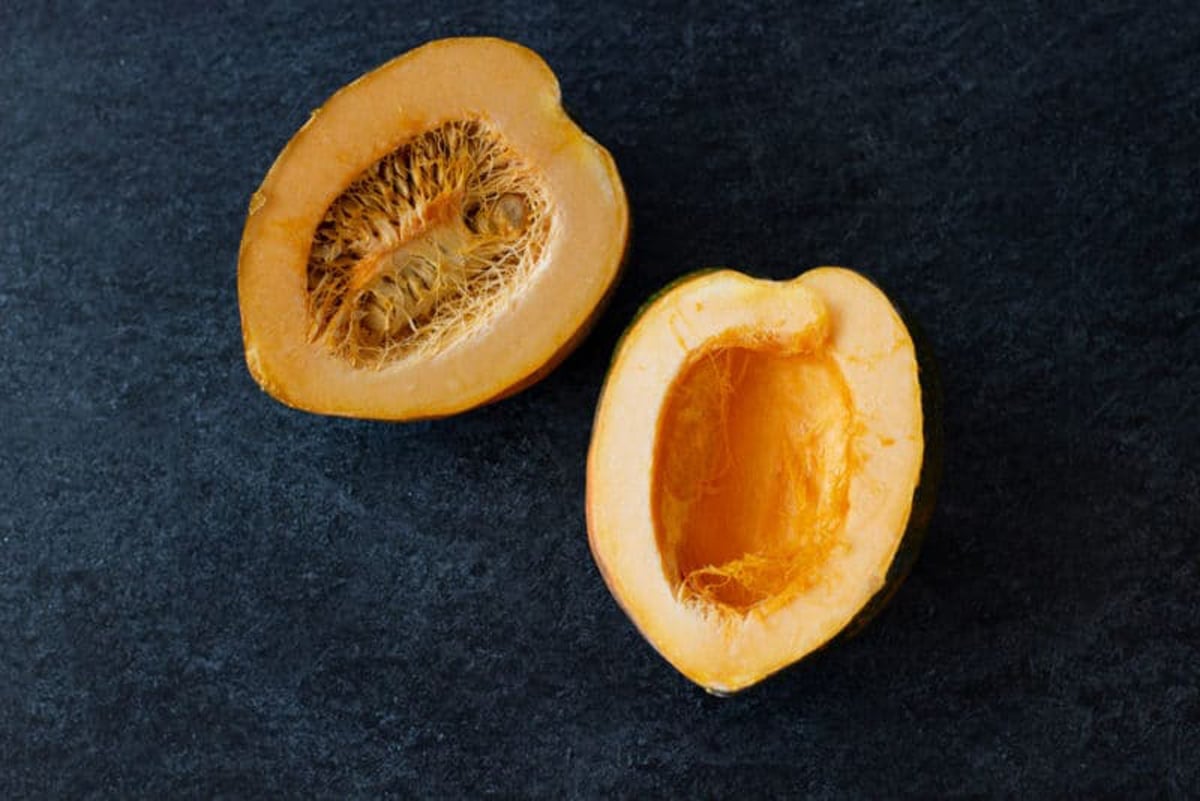
Dip a basting brush in olive oil and baste it over the flesh of the vegetable. This helps keep the moisture in and keeps it from drying out when roasting in the oven.
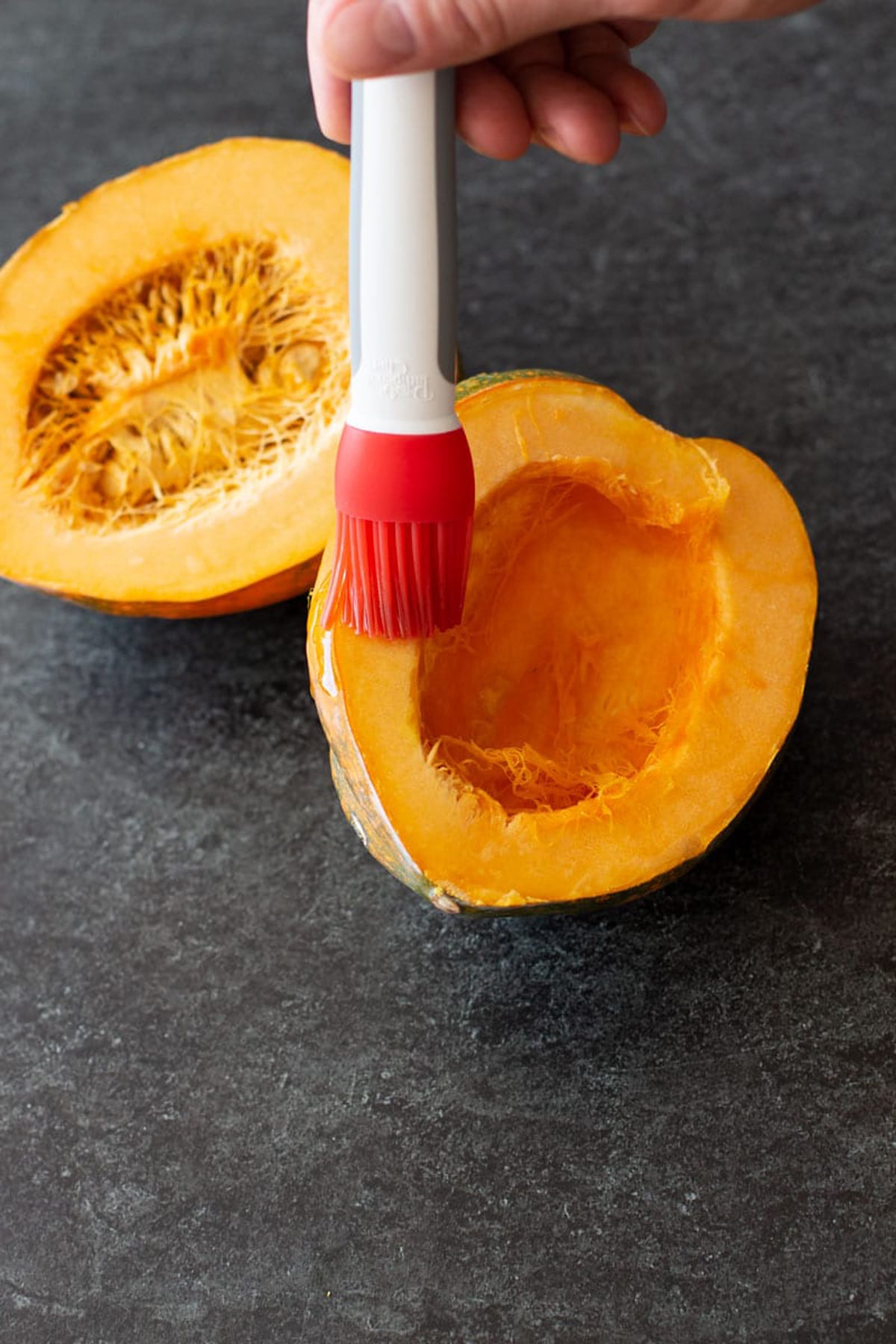
Preheat the oven to 350°F. Since we're making puree, place it flesh side down on a baking sheet lined with aluminum foil or parchment paper. The hard shell should be facing up when roasting acorn squash in the oven.
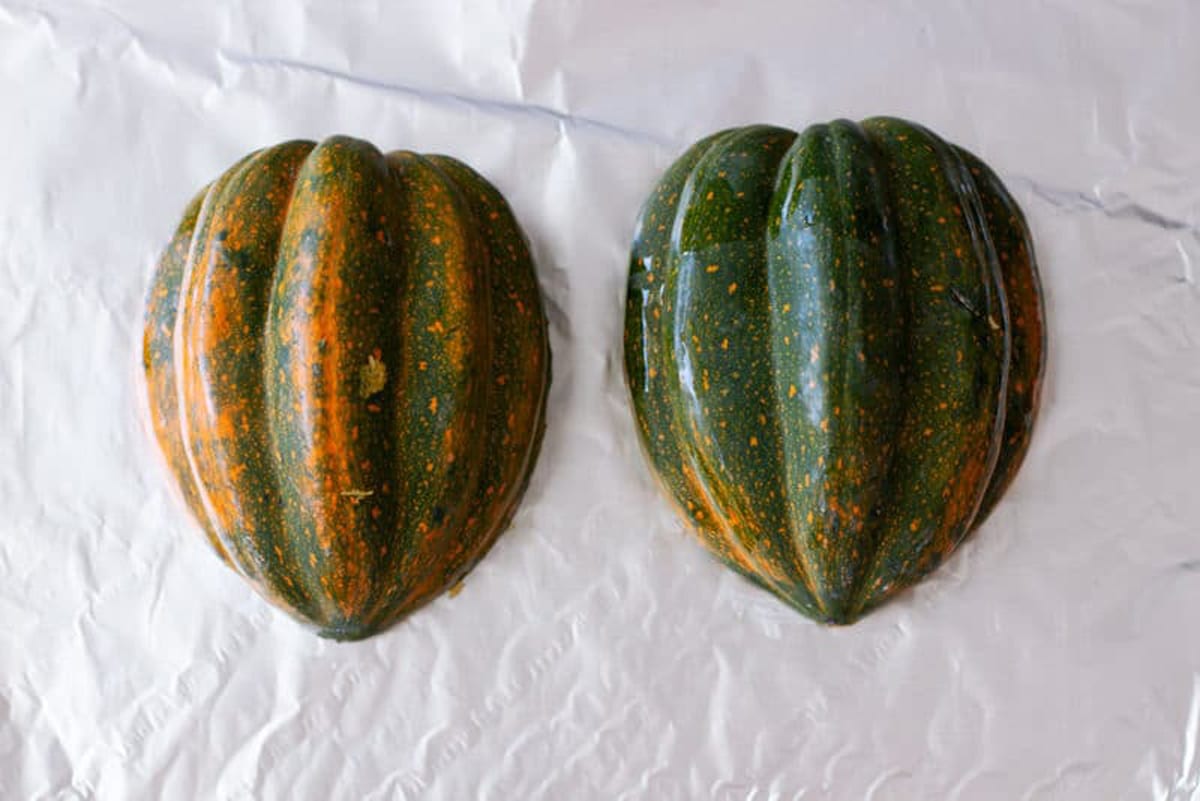
Bake for 45 minutes. When done, remove the baking sheet from the oven and allow it to cool for about 10 minutes. Using a heavy spoon, remove the roasted squash and place it into a food processor or blender. The shell should not be used to make the puree.
Expert Tip: It should be really easy to scoop out the tender flesh of the roasted squash. The texture should be extremely soft.

To get a super smooth consistency, turn on the food processor or blender and puree. There is no need to add additional olive oil, water, or any other liquid.
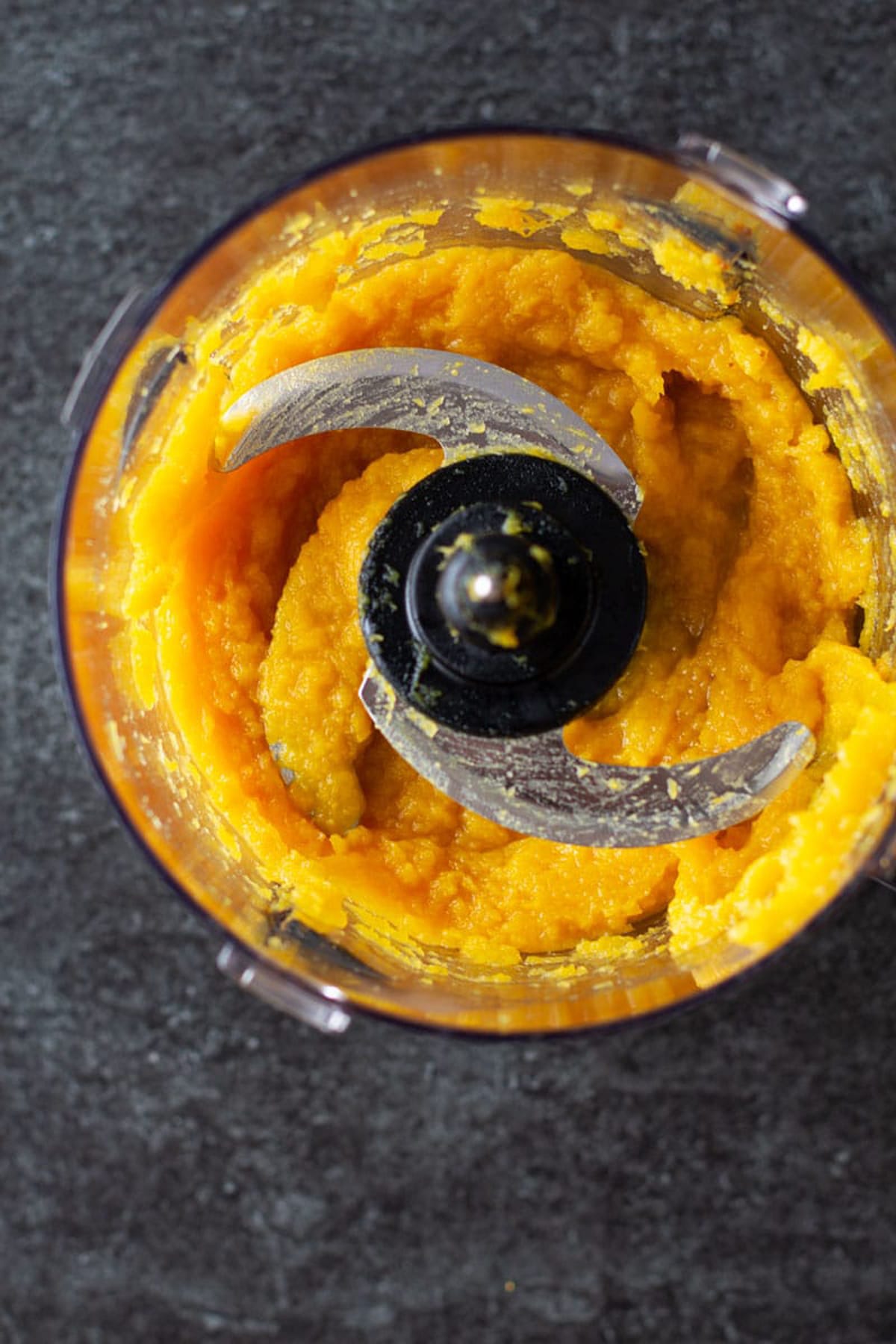
Once the mixture is smooth and slightly thick, put the puree into a bowl and it's ready for use!
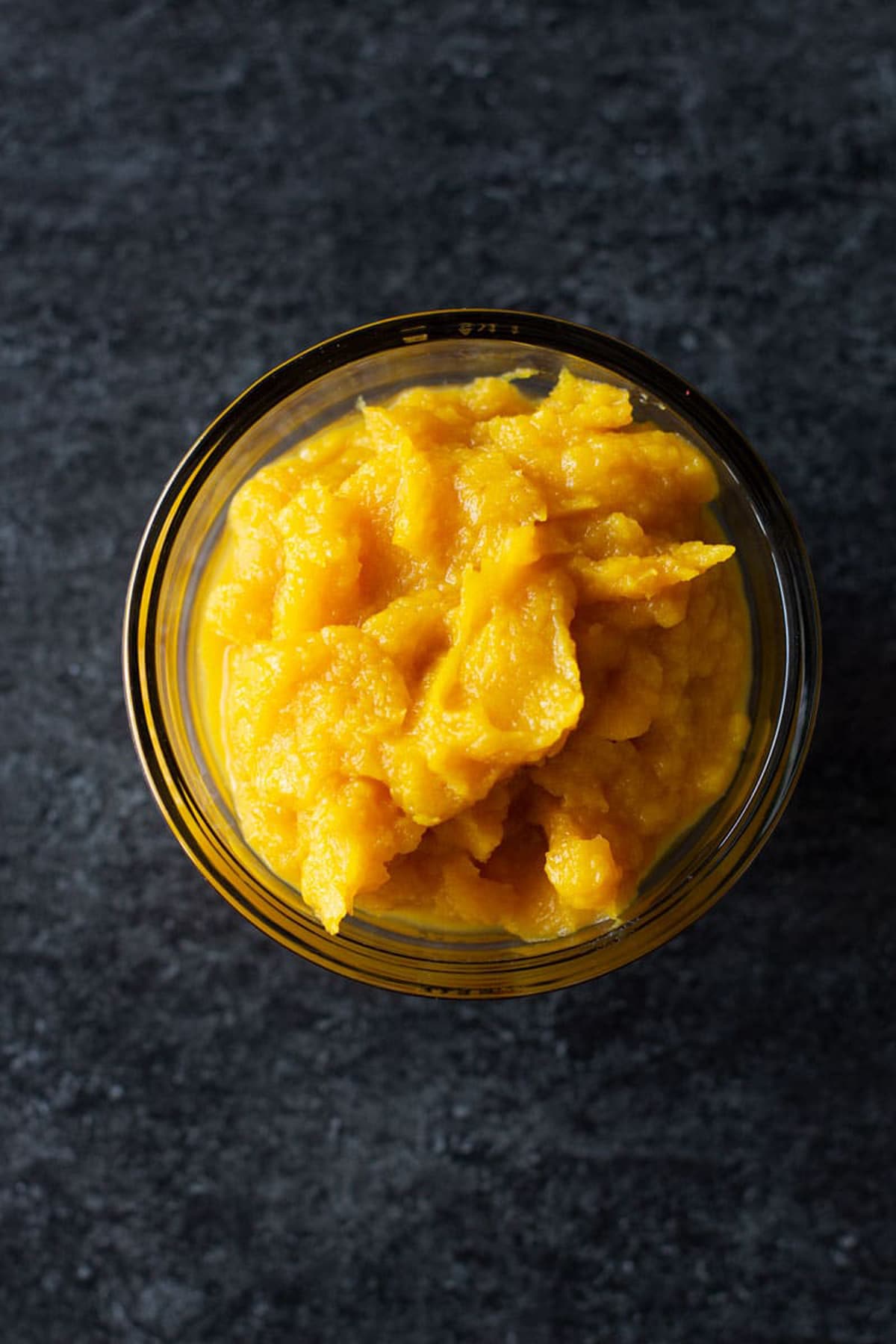
How To Puree
Pureeing is a cooking technique that mashes different types of food into a smooth and slightly thick paste like substance. A blender or food processor is typically used to puree foods like vegetables, fruits, and even beans. To puree acorn squash, place the lid on the blender or food processor and puree until the substance is smooth. To make it more of a mashed consistency, skip the food processor and use a hand held masher. An immersion blender can also be used. I've even had a lot of success using a standing and electric mixer! Or, using a fork to mash can also be highly effective.
👶 Acorn Squash Baby Food
When making your own baby food at home, it's important to keep the ingredients simple and basic. If you're using this recipe to make homemade baby food, eliminate basting on the olive oil. Instead, baste on a small amount of water. Roasting it flesh down with a small amount of water helps trap in the natural moisture so no other liquids need to be added when pureeing. This method produces the best texture of puree. Not too thick and not too watery. And it's perfectly tasty and nutritious for your little one!
🙋 Frequently Asked Questions
Stored in the refrigerator in a container with a lid, it will last for 3-4 days. It will last in the freezer for up to 3 months.
No. When roasting it flesh down, the shell helps trap in the moisture which contributes to the velvety smooth texture when pureed.
Yes! Not only is it naturally high in fiber and helps aid in digestion, but it's also full of antioxidants. It also contains a lot of vitamin C and beta-carotene which help support eye health.
💭 Expert Tips
- Substitute the olive oil for any healthy oil such as extra-virgin olive oil or grapeseed oil.
- Try using the puree in this pumpkin banana bread recipe!
- While you don't need to add any additional liquid, you can add some if necessary. I've found that if you roast it for a full 45 minutes, it turns out incredibly soft and there is no need to add a liquid, butter, or cream to change the consistency.
- Butternut or hubbard both work well as a substitute.
- Did you know that you can eat the skin on acorn squash? Yes, you sure can and it's surprisingly tasty!
- Freezing this puree is easy. Whenever I'm roasting any type of vegetable to make puree, I alway make extra so I can freeze it for later. To freeze, allow the puree to completely cool and then place it in a freezer safe container. Write the date on a label so you know when it was made. Place it in the freezer for up to 3 months.
🍽️ More Squash Recipes
I love spaghetti but it's so heavy and full of carbs. For a nice alternative, I use a spaghetti squash and pile on my spaghetti sauce. I also really enjoy it with this homemade basil pesto. Squash can also be added to a variety of different soups. I enjoy adding yellow squash to this poor man's soup and to this chicken vegetable soup recipe.
Looking for more muffins to make using this puree? Instead of using pumpkin puree when making these chocolate chip pumpkin muffins, use this acorn squash puree instead! It helps cut down on some of the sweetness and makes these muffins more savory!
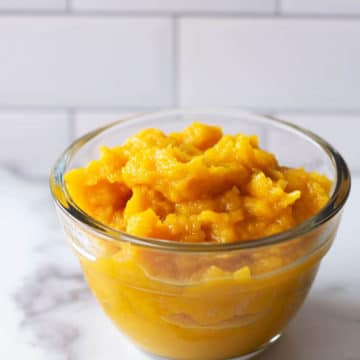
Acorn Squash Puree
Equipment
- blender or food processor
- baking sheet
Ingredients
- 1 acorn squash
- 1 tablespoon olive oil
Instructions
- Preheat the oven to 350°F.
- Start by cutting the squash lengthwise on a cutting board. Take a spoon and dig out all the seeds and strings. Discard or save the seeds for roasting later on.
- Dip a basting brush into the olive oil and evenly baste over the flesh.
- Place each piece flesh down on a baking sheet lined with aluminum foil or parchment paper. You want the hard shell to be face up when roasting.
- Roast in the oven for 45 minutes. When done, remove the baking sheet and all to cool for about 10 minutes.
- Using a heavy spoon, remove the roasted squash and place into a food processor or blender. Note: It should be extremely tender and easy to spoon out.
- Turn on the food processor or blender and puree for 20-30 seconds.
- Use immediately or store in the refrigerator until ready for use.
Video
Notes
- Substitute the olive oil for any healthy oil such as extra-virgin olive oil or grapeseed oil.
- While you don't need to add any additional liquid, you can add some if necessary. I've found that if you roast it for a full 45 minutes, it turns out incredibly soft and there is no need to add a liquid, butter, or cream to change the consistency.
- You can substitute either butternut or hubbard.
- If you're using this recipe to make homemade baby food, eliminate basting on the olive oil. Instead, baste on a small amount of water.
- Did you know that you can eat the skin? Yes, you sure can and it's surprisingly tasty!
- Freezing this puree is easy. Whenever I'm roasting any type of vegetable to make puree, I alway make extra so I can freeze it for later. To freeze, allow the puree to completely cool and then place it in a freezer safe container. Write the date on a label so you know when it was made. Place it in the freezer for up to 3 months.

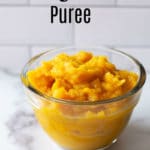
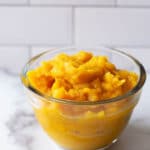
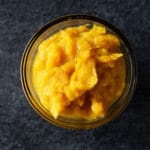
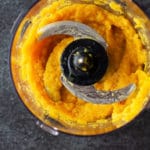
Amy Liu Dong
This is so easy and the acorn puree looks so good and creamy!
I will definitely try this!
Ann
I have a bunch of acorn squash from my garden, and this sounds like the perfect recipe to try! Thanks for the share!
Amanda Mason
Enjoy!
Jamie
Wow! This squash puree dish looks so yummy and very creamy which makes it so appealing! The best part is we only need 2 ingredients to make this! I'll definitely make this a home!
Amanda Mason
I hope you enjoy it and try using it in the acorn muffins I mention in the recipe!
Dana
Do you have any other baby purée recipes?? I love the format of your website! Thanks for sharing & making it so easy.
Amanda Mason
Hi Dana!! I'm so glad you thought this was so good and easy to make!! I don't have other baby purees yet, but I plan to make more! Soe other purees you could try and tweak a little are these: https://recipesworthrepeating.com/spinach-avacado-pasta/ and https://recipesworthrepeating.com/sweet-potato-soup/
Claire
I used this to make the basis of a Mac and cheese!!!
So easy and so delicious!
My kids didn't notice the addition of veg and I loved the added nutrition it gave them.
Thank you
Amanda Mason
Hi Claire! I love it!! What an incredible base for macaroni and cheese! Brilliant!! SO glad you guys loved it and love that you got all the nutritional value!!
Sam | Ahead of Thyme
Wow how easy is this!! And it’s the perfect item for so many fall dishes. Can’t wait to try it